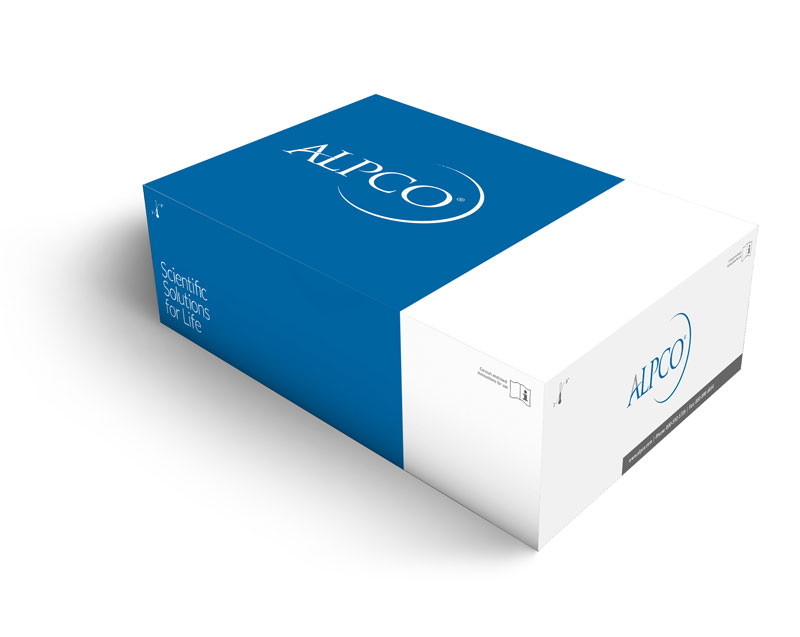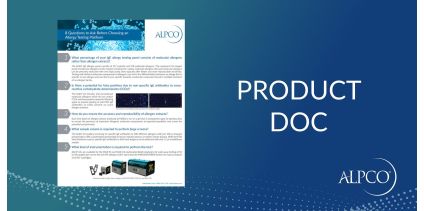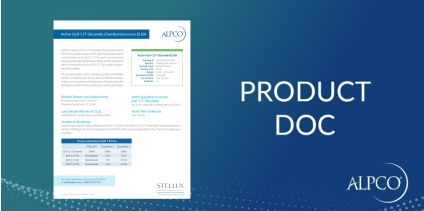Complement C3a des Arg ELISA
$885.00
Catalog
74-C3AHU-E01
The Complement C3a des Arg (human), ELISA kit is a colorimetric competitive enzyme immunoassay kit for the the quantitative determination of C3a des Arg in human plasma.
Species
Human
Regulatory Status
Research Use Only. Not for Use in Diagnostic Procedures.
Product Distribution
Available Worldwide
Range
0.313 - 20 ng/mL
Sensitivity
0.120 ng/mL
Sizes
96 Wells
Sample Types
Plasma
Inc Time Hour
3
Inc Time Overnight
No
Inc Time See Protocol
No
Sample Size
225
Detection
Colorimetric
The Complement C3a des Arg (human), ELISA kit is a colorimetric competitive enzyme immunoassay kit with results in 3 hours. Absorbance is read at 405 nm. This kit comes ready-to-use with sample preparation reagents included. The Complement C3a des Arg (human), ELISA kit is specific, offering low cross-reactivity to structurally related molecules, and sensitive with quantification of as little as 120 pg/mL Complement C3a des Arg.
For the quantitative determination of Complement C3a des arg in human EDTA plasma.
Activation of the complement cascade is initiated by multiple pathways, including C1q binding of antigen-antibody complexes on pathogens (classical pathway), binding of serum lectin to pathogen-unique mannose residue patterns (MBL pathway), or the spontaneous hydrolysis of C3 and subsequent processing to C3 convertase (alternative pathway). C3a and C4a are two complement cleavage products of 77- and 76-amino acid residues, respectively, that are liberated into the bloodstream and processed to their more stable metabolites C3a des Arg and C4a des Arg. Although both fragments have anaphylactic properties, C3a is considered a more potent stimulator of smooth muscle cell contraction, histamine release, and inflammation than C4a. Complement activation is associated with sepsis, respiratory distress syndrome, multi-organ failure, and transplant organ rejection.
For the quantitative determination of Complement C3a des arg in human EDTA plasma.
Activation of the complement cascade is initiated by multiple pathways, including C1q binding of antigen-antibody complexes on pathogens (classical pathway), binding of serum lectin to pathogen-unique mannose residue patterns (MBL pathway), or the spontaneous hydrolysis of C3 and subsequent processing to C3 convertase (alternative pathway). C3a and C4a are two complement cleavage products of 77- and 76-amino acid residues, respectively, that are liberated into the bloodstream and processed to their more stable metabolites C3a des Arg and C4a des Arg. Although both fragments have anaphylactic properties, C3a is considered a more potent stimulator of smooth muscle cell contraction, histamine release, and inflammation than C4a. Complement activation is associated with sepsis, respiratory distress syndrome, multi-organ failure, and transplant organ rejection.







